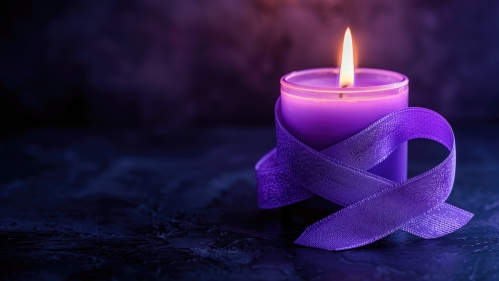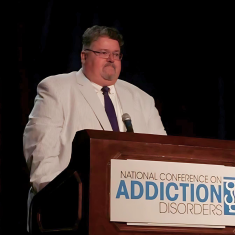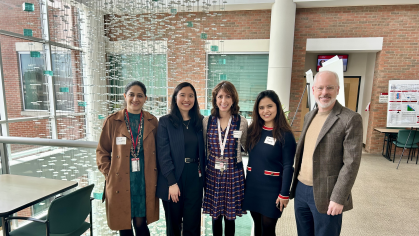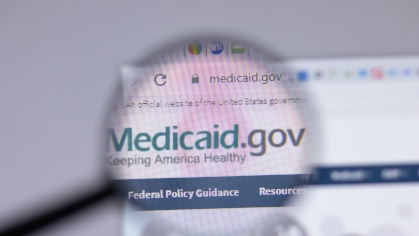Together We Can: Recognizing International Overdose Awareness Day and the Role of Public Health

August 31 is International Overdose Awareness Day.
We sat down with Philip McCabe, a health education specialist at the Rutgers School of Public Health’s Center for Public Health Workforce Development, who is a Nationally Certified Addiction Specialist and consultant on several national initiatives sponsored by the U.S. Substance Abuse and Mental Health Services Administration (SAMHSA).
What is International Overdose Awareness Day and why is it important to recognize it?
International Overdose Awareness Day (IOAD) is the world's largest annual campaign to end both fatal and non-fatal overdoses, remember those who have died, and acknowledge the impact of overdose deaths on family and friends left behind. It is a day to raise awareness about this important public health issue, and an annual opportunity to provide knowledge and resources to help people who may be struggling with substance use disorder or know someone who is.
While we have seen a drop in suspected overdose deaths in New Jersey this year, nationwide figures tell us that overdose is still a leading cause of death for people under the age of 40. These deaths are preventable.
The theme for IOAD 2024 is “Together we can”, highlighting the power of our community when we all stand together. If we want to prevent overdose deaths, we need to help people enter recovery. Recovery is a process of change through which people improve their health and wellness, live self-directed lives, and strive to reach their full potential. Even people with severe and chronic substance use disorders can, with help, overcome their illness and regain health and social function.
What is public health’s role in preventing overdoses?
For those of us in public health, the end goal for this day is to help prevent unnecessary deaths from the misuse of substances. We can do this by educating people and providing tools that can help keep themselves and their loved ones safe. Education might focus on prevention strategies to keep people from misusing prescribed and non-prescribed substances, or disseminating information about evidence-based treatment and how people can access it.

Public health professionals also have an important role in reducing the stigma of substance use disorder, so people are less afraid to ask for help. We also need to advocate for harm reduction strategies in towns and communities nationwide, so people who use substances can do so with less risk of fatal overdose.
Finally, we must help close the loop by creating awareness about why and how to integrate people in recovery back into communities. This is the only way communities can rebuild, and that people in recovery will believe it is possible to live their lives with meaning and purpose.
Did IOAD begin because of the opioid crisis?
No, actually the first International Overdose Awareness Day was established at an Australian harm reduction center in 2001, so before the height of the opioid crisis. It is important to remember that overdoses can happen with any drug or substance, and to not conflate overdoses with opioid use. People taking many other prescribed or non-prescribed substances are at risk, too.
How can I get involved in supporting the goals of IOAD?
- You could attend an in-person or virtual event (or host one of your own!)
- You could research organizations that support people affected by substance use disorder and volunteer or donate.
- You could share information on social media or post flyers in your local coffee shop, library, or office about:
- How to spot the signs of overdose
- Where to find treatment (FindTreatment.gov, ReachNJ, and samhsa.gov) and addiction psychiatry
- What harm reduction is and why it is important
- How to create recovery-friendly workplaces and communities
- You could become trained in administering naloxone and encourage others to do the same. Naloxone is available on Rutgers New Brunswick, Newark, and Camden campuses. You can also Request Naloxone and fentanyl test strips.
- Talk to your workplace about including naloxone to their first aid kits and how to train employees on recognizing overdose and administering naloxone.
- You could take a free “Opioids in the Workplace Awareness” course, developed by the Rutgers School of Public Health’s Center for Public Health Workforce Development.

- Rutgers graduate students could become student educators via the Fall 2024 Rutgers Interdisciplinary Opioid Trainers (RIOT) program. At the completion of the RIOT training, students will be prepared to give a one-hour presentation to community organizations about the opioid crisis.
Together We Can
When we approach substance use disorder as a disease, not a moral failing, we can see that prevention efforts and treatment approaches for addiction are generally as successful as those for other chronic diseases.
We need to reduce the stigma for those using drugs.
The fact is, almost everyone knows someone who has been impacted by substance use disorder, either personally struggling with addiction, or having lost someone to the disease. So, whether you participate in a specific event or activity, or simply pause to recognize the challenges that many face, we encourage you to visit the links provided here to become more informed about some of the resources available. You never know when the need to share them may arise.


